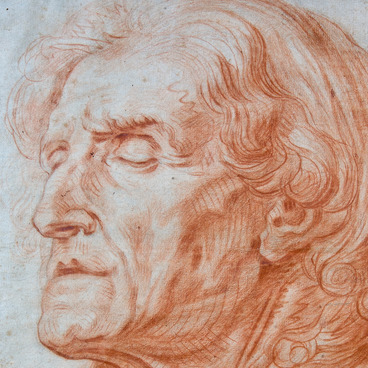The table with personal belongings of Alexander Stupin, founder of the first provincial paining school in Russia, is part of the interior recreated after a painting by Professor Nikolay Alexeev. It depicted Stupin in his studio.
The dressing table came to Russia from France. It appeared in the Baroque era, which prevailed in the 18th century when luxurious gowns were popular in France. An exquisite morning dress would be replaced with a magnificent outdoor dress, which in its turn would give way to a lush and sumptuous ballroom gown. Frequent changes of dresses were the reason, why this piece of furniture appeared, for it solved several tasks at once. At a dressing table it was possible not only to wash oneself but also to change dresses, tidy one’s hair, and freshen oneself up.
The new invention was highly appreciated mainly by representatives of high society. Gradually, instead of a mirror with a couple of drawers and a wash-bowl, exquisite dressing tables began to appear in bedrooms of all rich houses. However, at first, they looked like writing desks, and sometimes one table performed both functions simultaneously: the drawers could contain both quills, writing paper, and jars with cosmetic aids. Dressing tables were a necessary part of both women’s and men’s paraphernalia.
The table is made of rosewood obtained from subtropical tree Dalbergia decipularis of the genus Dalbergia, which grows only in Brazil. Rosewood is characterized by unusual colors: from creamу to rosy with red veins and a rose-like scent.
There are several objects on the table. Among them there is a teaching aid Female Head that was used in the A.V. Stupin Arzamas School. Stupin modelled his methodology of art education after the Saint Petersburg Academy of Fine Arts. It was based on copying original pictures, including engravings by Russian and West European artists, as well as drawing of sculptures and painting from life.
There is also a porcelain cup from Stupin’s personal belongings. It is painted with bright flower bouquets and decorated with an inscription “Presented on your name day”. Next to it, there is a book Nature, a Reflection of the Mercy and Wisdom of the Creator translated by Dmitry Dmitrievsky, a writer, teacher and ethnographer. This was the only edition of the book during the translator’s lifetime. This book is the second volume (of two) of a rare anonymous natural philosophy work by an unknown writer.
We also see a writing set from the collection of Alexander Stupin’s personal belongings. The inkstand used to occupy a central position on the 19th-century writing desk. It was necessary for doing business correspondence, drawing up documents, and keeping accounts.
In the forefront, one can see an invitation card to a lecture by bibliophile and art historian Pyotr Kornilov on “New works by Painter Vedenetsky (From the History of A.V. Stupin Arzamas School)” that was held in the State Russian Museum on the 23d of September, 1943.



